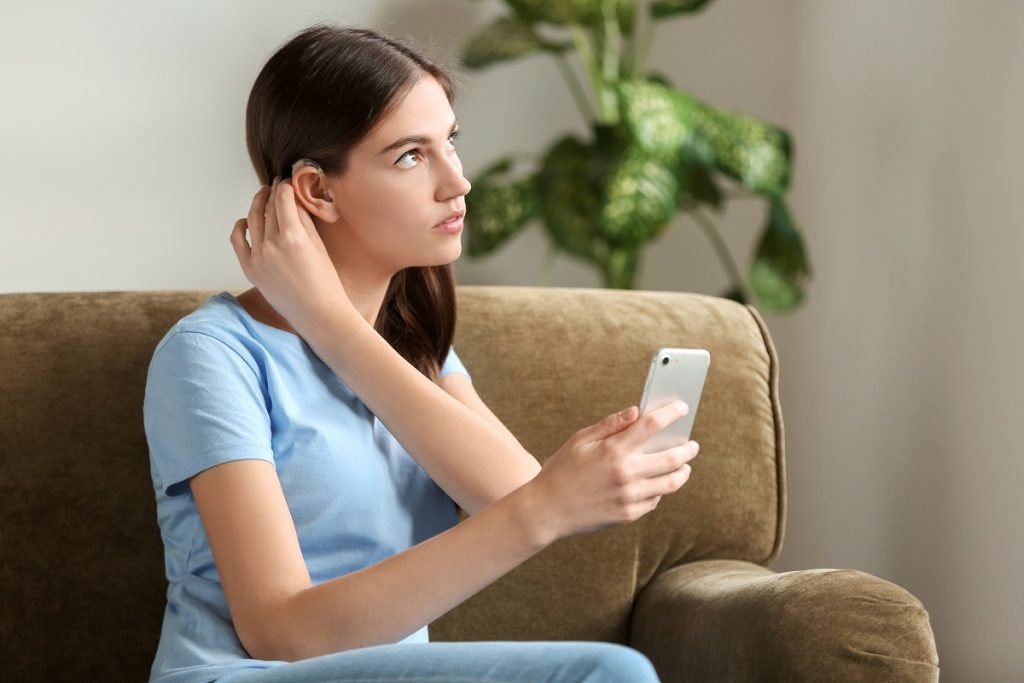I want you to picture a customer.
He’s young, tech-savvy and a professional with an ambition to progress in his career. He has experienced hearing loss all his life, worn hearing aids throughout and always wrestled with a lack of confidence and self-consciousness because of it.
This customer is very real. He came to Boots Hearingcare recently and in addition to his small on the ear hearing solutions, we made some custom in-ear products for him. Essentially, it was a black faceplate that looks like a standard earbud, something that he could wear at night in order to be more aware should his baby cry. Beyond that, though, it enhanced his day-to-day life, made him feel comfortable and confident and removed awkward conversations he’d previously encountered when people saw his hearing aids.
Importantly, he felt connected throughout the day.
That customer has been blown away by how it’s changed his life – not in a revolutionary way, but by how it has simplified his life.
That cosmetic narrative in this conversation is what has allowed him to feel comfortable and confident. That accessibility is blurring the line of what is a hearing aid and just technology and is making the industry far more accessible.
That, of course, has been supported by the delivery of a superior experience.
Hearing aids are now multifunctional and even come with an app
You may remember a time when hearing aids came with fiddly controls that brought nothing but difficulty, especially for anyone that had dexterity issues.
That has advanced. A lot of hearing aids now come with an app on the phone, allowing the user to control the listening experience on a device they’re familiar with, while the ability for it to geotag and remember how an individual liked their settings is invaluable and is making the technology far more accessible and easier to control.
Bluetooth has also become a great enabler, helping a hearing aid go beyond what its name suggests. It’s making direct streaming music, radio, podcasts, and audiobooks as simple as it would be if you were wearing a pair of the latest Apple Airpods.
Initially, the limitation the industry faced was that hearing aids could be Bluetooth connected and paired to only one device at a time.
However, that barrier has also been totally removed. Not having the hassle of disconnecting from one device in order to connect with another is an important thing and just simplifies the way we go about our daily lives.
Hearing care pricing structures are more accessible than ever before
Recently, Boots Hearingcare launched its lowest ever price rechargeable hearing aid – the Starkey Livio 1000 R – available at less than £43 per month.
It’s easy to assume that the product will not be up to the same standard. Yes, it doesn’t offer full flexibility when it comes to bluetooth pairing but does offer direct streaming capability with great sound quality. A product like this is significantly better than any old analogue-type hearing aid and has more features than our lowest entry priced hearing aids.
We know monthly payment plans are a good enabler for people to be able to access higher levels of technology than they otherwise would if they were paying for a product in one lump sum. Going back, many years ago now, the price was a shock factor.
This is still a high-end product, one with exceptional sound quality, and is just one example of how life-enabling technology, like this, is available at an affordable payment price, similar to what you would take out for a phone contract.
Steps being taken to make accessible tech more accessible
Remember the customer I referenced at the beginning? What I believe we will see is the industry take strides to get accessible hearing care tech in front of people, like him, at a much earlier stage in their journey.
The online hearing care sales market is still an issue, in that sense, that we’re trying to navigate around. I can definitely see people being able to walk into one of our stores and wanting to try some technology that they can pair to their phone – the type of person that, perhaps, is only enduring mild hearing loss.
By training assistants up, we will be able to still do the necessary tests, demonstrations and recommend a product that is either hearing-focused or just wearable. It won’t be prescribed, but it will be a product that will fill that gap before we start opening discussions about thorough investigative assessments.
That type of over-the-counter type hearing care product is emerging in America. We know the tech giants are starting to play in this field and that’s something we need to embrace if we are to widen the market, especially when you consider that there are approximately four million people out there who could benefit and enjoy this technology now. People often wait until their hearing loss gets significantly disabling and impacting on the quality of life before they act, by this time they have missed out on a lot.
Hearing care products are becoming more accessible, affordable, aesthetically good, and multifunctional. In the meantime, we will embrace that in our mission to widen the market and, as a result, our hope is that people will come to us sooner to ensure they enjoy an enhanced quality of life and can stay connected.
Written by Karen Shepherd, Director of Professional Standards at Boots Hearingcare

